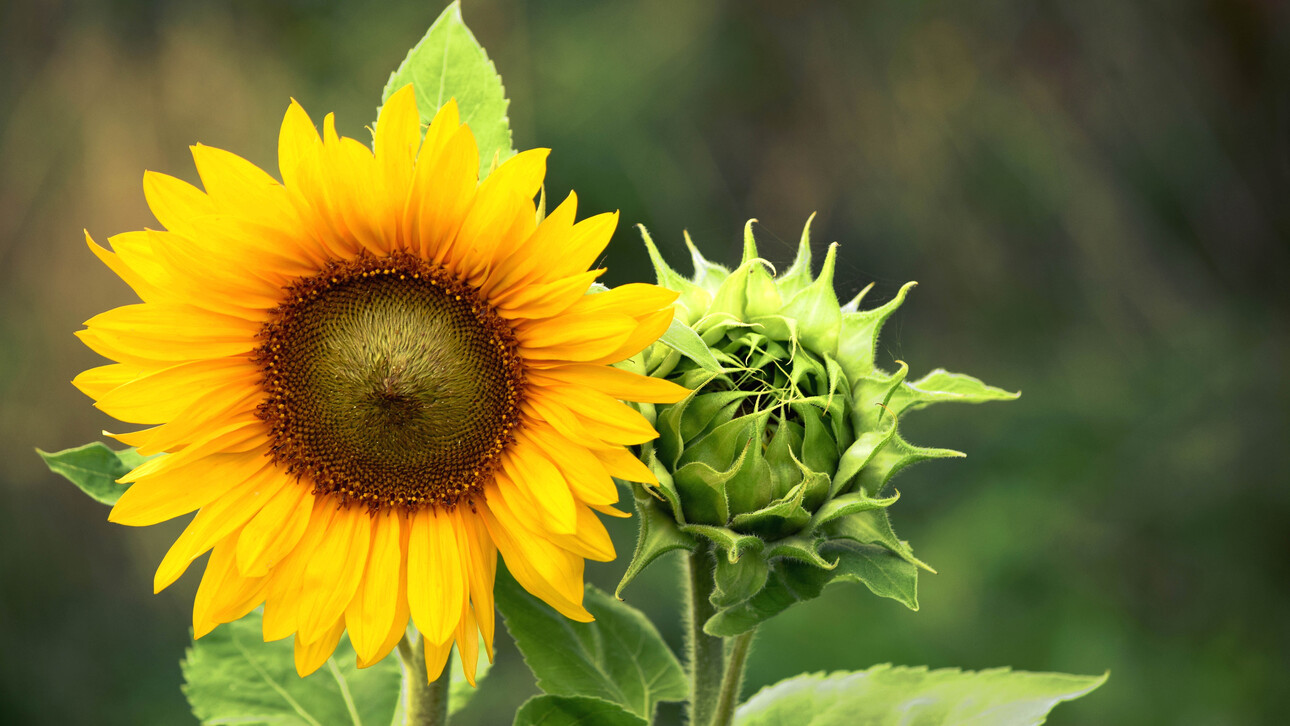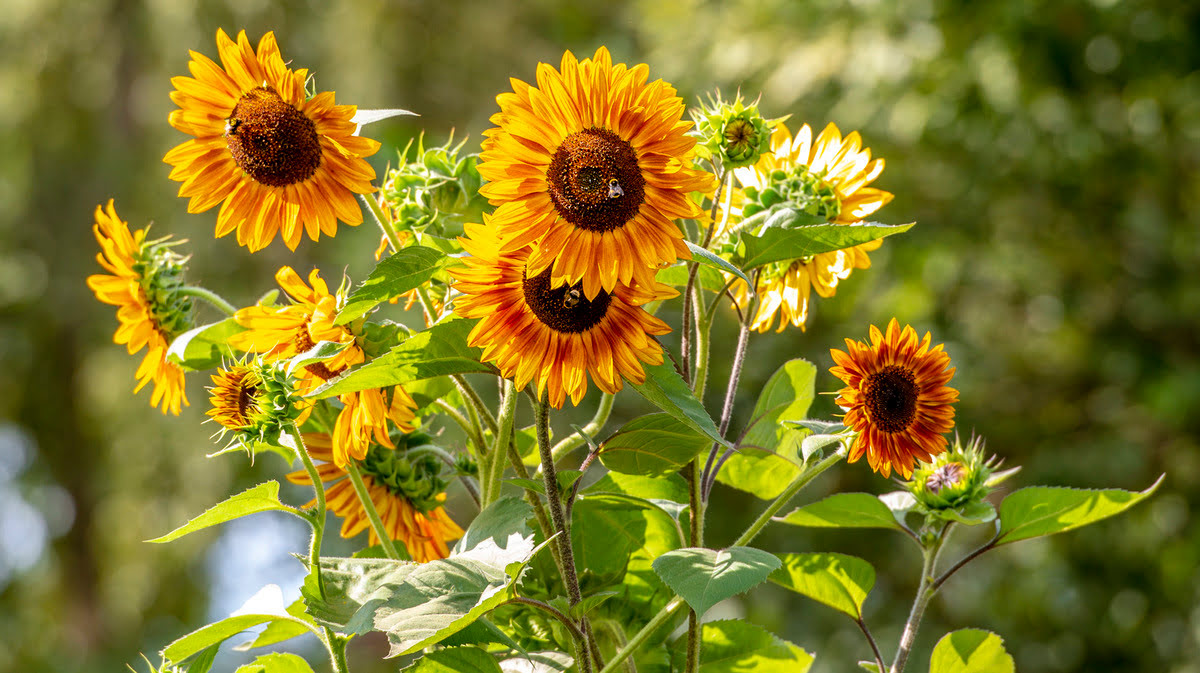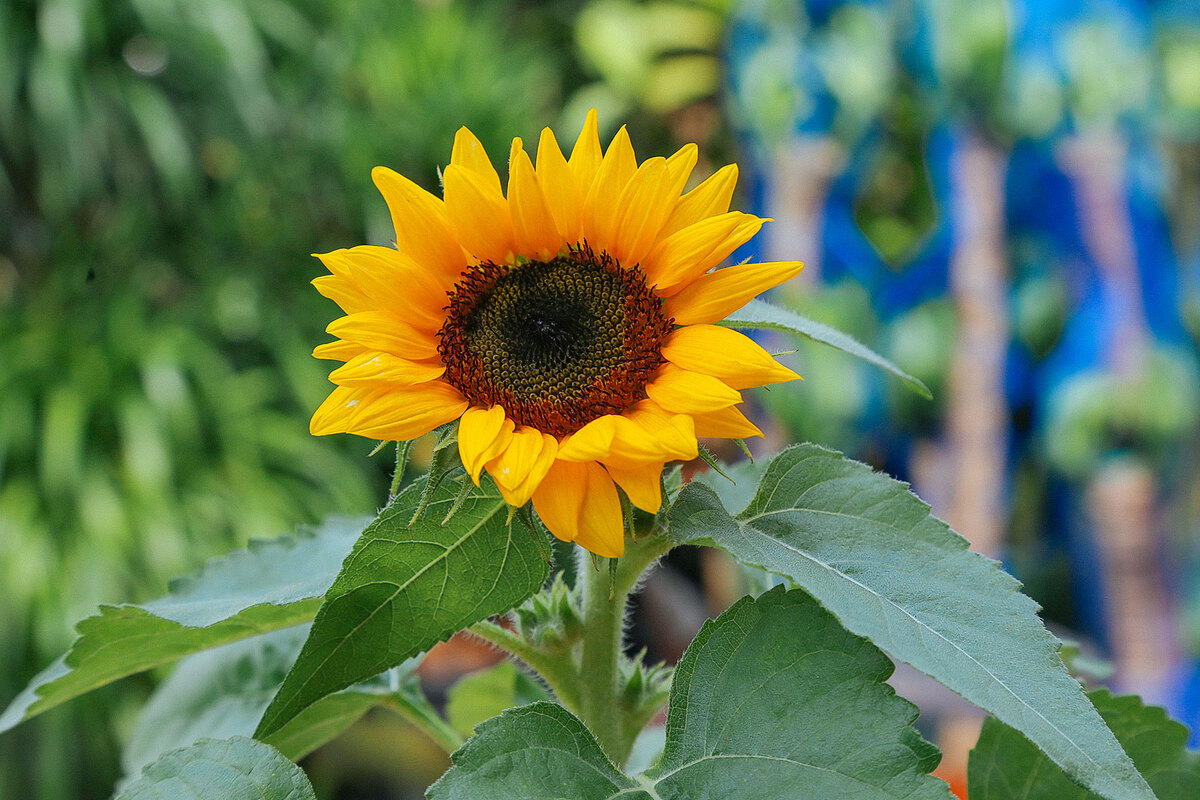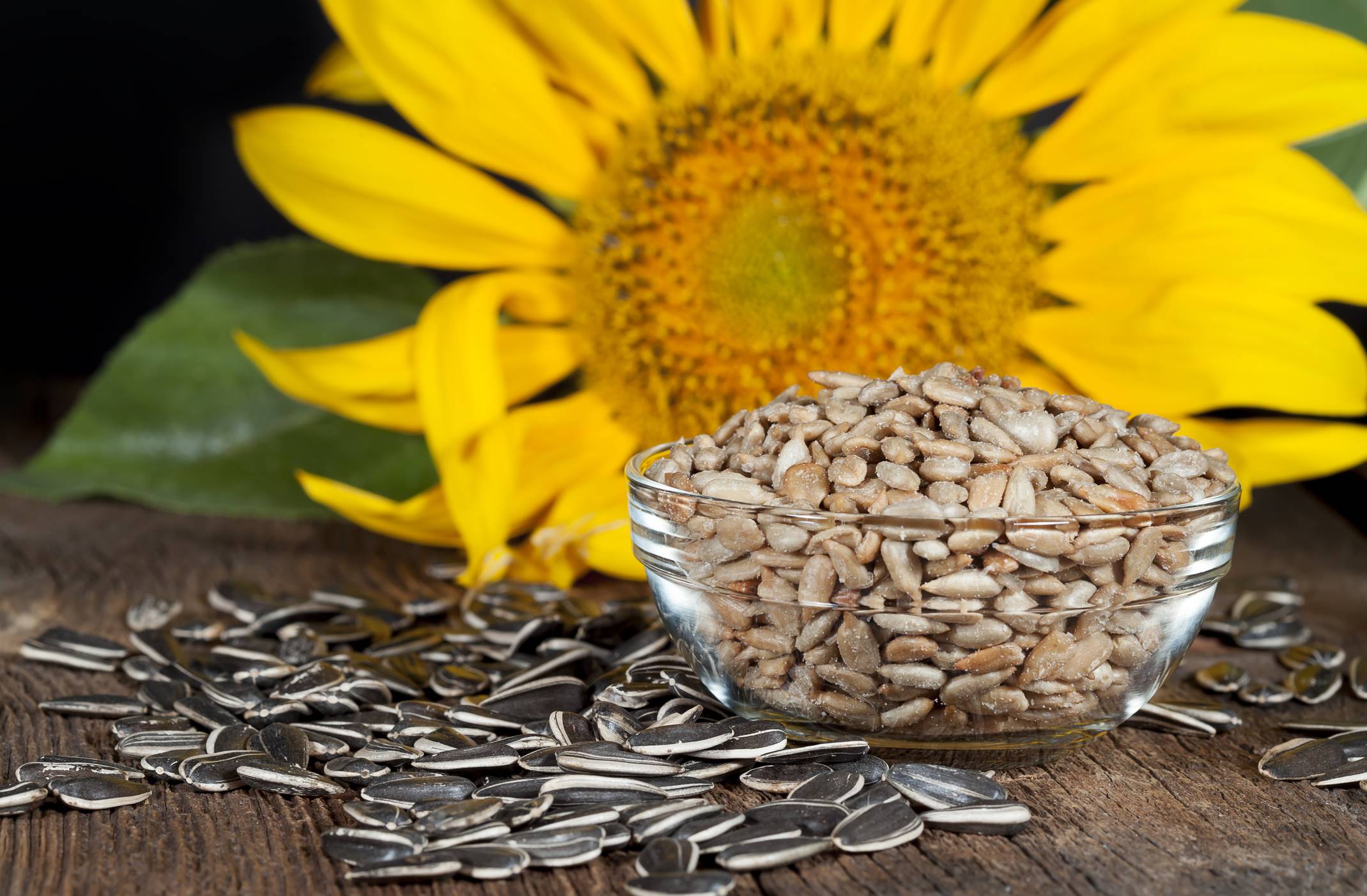Home>Types of Gardening>Ornamental Gardening>When Can Sunflowers Be Planted
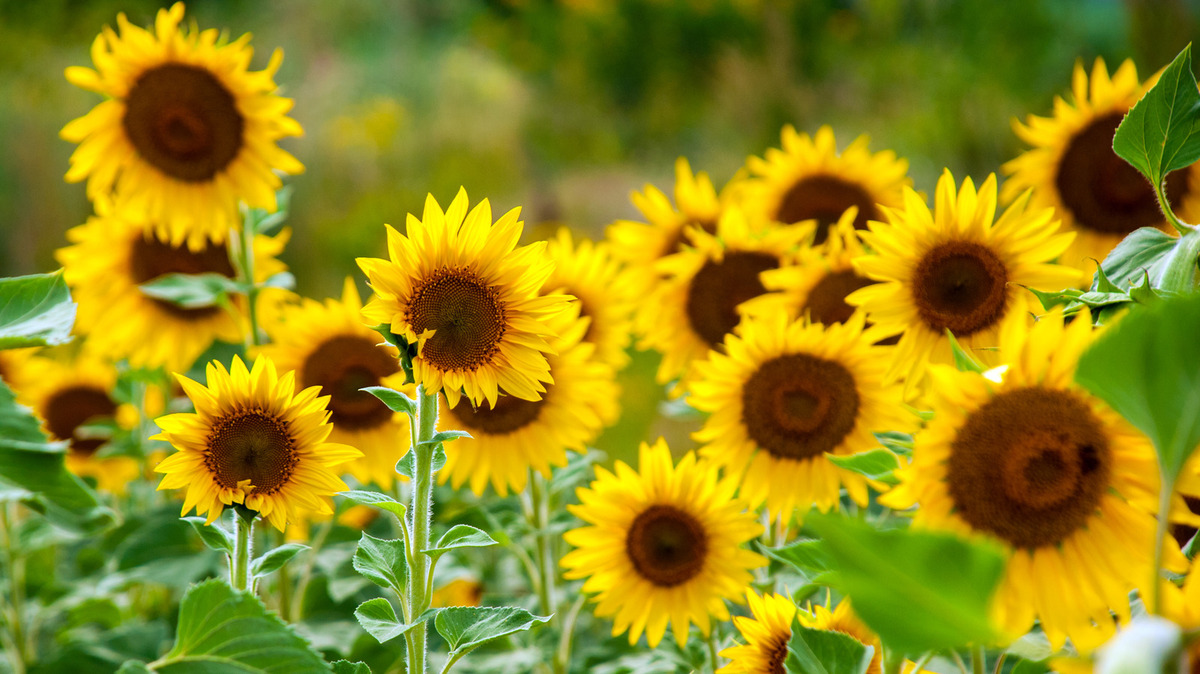

Ornamental Gardening
When Can Sunflowers Be Planted
Modified: February 7, 2024
Learn the best time for planting sunflowers in your ornamental garden. Discover tips for successful sunflower cultivation and vibrant blooms.
(Many of the links in this article redirect to a specific reviewed product. Your purchase of these products through affiliate links helps to generate commission for Chicagolandgardening.com, at no extra cost. Learn more)
Table of Contents
**
Introduction
**
Sunflowers are not only a stunning addition to any garden, but they also hold a special place in the hearts of gardening enthusiasts. With their vibrant colors and towering presence, sunflowers bring joy and warmth to any landscape. Whether you're a seasoned gardener or a novice with a green thumb, the allure of sunflowers is undeniable.
In this comprehensive guide, we will delve into the world of sunflowers, exploring the best practices for planting and caring for these radiant blooms. From understanding the optimal planting time to mastering the art of sunflower maintenance, this article aims to equip you with the knowledge and skills needed to cultivate thriving sunflowers in your own garden.
Join us as we embark on a journey through the enchanting realm of sunflowers, uncovering the secrets to nurturing these iconic flowers and witnessing their majestic beauty unfold. Whether you're seeking to adorn your garden with a burst of sunshine or simply yearning to connect with nature, the world of sunflowers offers a myriad of delights waiting to be explored. So, let's roll up our sleeves and immerse ourselves in the art of cultivating these resplendent blooms.
Factors to Consider Before Planting Sunflowers
Before diving into the planting process, it’s crucial to consider a few key factors that can significantly impact the success of your sunflower garden. By taking these elements into account, you can lay a solid foundation for healthy growth and abundant blooms.
Soil Quality:
The quality of the soil plays a pivotal role in nurturing thriving sunflowers. Sunflowers thrive in well-drained, loamy soil with a slightly acidic to neutral pH level. Conduct a soil test to assess its composition and pH, and amend it with organic matter or compost if necessary to create an optimal growing environment for sunflowers.
Sunlight Exposure:
As their name suggests, sunflowers have an insatiable appetite for sunlight. Before planting, assess the potential planting site to ensure it receives ample sunlight throughout the day. Ideally, sunflowers require at least 6-8 hours of direct sunlight to flourish, so choose a location that offers abundant sunshine for the majority of the day.
Spacing and Air Circulation:
Proper spacing between sunflower plants is essential for facilitating healthy growth and adequate air circulation. Crowded plants can lead to increased susceptibility to diseases and hinder the development of robust stems and foliage. When planning your sunflower garden, allocate sufficient space between each plant to promote optimal air circulation and minimize the risk of overcrowding.
Climate and Temperature:
Understanding your local climate and the typical temperature fluctuations is vital when cultivating sunflowers. These resilient blooms thrive in warm weather and are sensitive to frost. Therefore, it’s essential to plant sunflowers after the last frost date in your region to safeguard them from potential harm. Additionally, consider the length of your growing season, as sunflowers require ample time to mature and produce their iconic blooms.
By carefully evaluating these factors and making informed decisions based on your specific growing conditions, you can set the stage for a thriving sunflower garden that will captivate with its radiant beauty.
Best Time to Plant Sunflowers
Timing is of the essence when it comes to planting sunflowers, as it directly influences the growth, development, and ultimate success of these iconic blooms. Understanding the optimal window for planting sunflowers is essential for harnessing their full potential and reaping a bountiful harvest of vibrant flowers.
Seasonal Considerations:
The best time to plant sunflowers is during the late spring or early summer, once the threat of frost has passed and the soil has warmed to a suitable temperature. In most regions, this typically falls between April and June, aligning with the transition from the cooler spring months to the warmth of early summer. By planting during this period, you provide sunflowers with the ideal conditions to establish strong roots and thrive throughout the growing season.
Soil Temperature:
Monitoring the soil temperature is a critical aspect of determining the opportune moment for planting sunflowers. Sunflower seeds germinate most successfully when the soil temperature ranges between 70-85°F (21-29°C). By ensuring that the soil has reached this optimal temperature range, you can enhance the likelihood of robust seedling emergence and vigorous early growth, setting the stage for a flourishing sunflower garden.
Day Length:
Another factor to consider when determining the best time to plant sunflowers is the length of daylight. Sunflowers are photoperiodic plants, meaning their growth and development are influenced by the duration of daylight. Planting sunflowers when the days are longer and the nights are shorter provides them with the extended sunlight they require to thrive, contributing to strong, healthy stems and abundant flower production.
By aligning your sunflower planting schedule with these seasonal and environmental cues, you can optimize the conditions for successful growth and maximize the potential for a magnificent display of sun-kissed blooms in your garden.
How to Plant Sunflowers
Planting sunflowers is an exciting endeavor that begins with thoughtful preparation and attention to detail. By following these essential steps, you can sow the seeds for a thriving sunflower garden and set the stage for a spectacular display of radiant blooms.
Site Selection:
Choose a well-drained location with nutrient-rich soil and ample sunlight for planting your sunflowers. Whether you opt for a garden bed, raised planter, or container, ensure that the chosen site receives at least 6-8 hours of direct sunlight daily to support robust growth and prolific flowering.
Soil Preparation:
Before planting, prepare the soil by loosening it to a depth of 12-18 inches and incorporating organic matter, such as compost or well-rotted manure, to enrich its fertility. This step is crucial for creating an optimal growing environment that promotes strong root development and overall plant vigor.
Seed Sowing:
When sowing sunflower seeds directly into the soil, plant them at a depth of 1-1.5 inches and space them 6-18 inches apart, depending on the variety’s mature size. If starting seeds indoors, use biodegradable pots to minimize root disturbance during transplanting. Sow the seeds 2-3 weeks before the last expected frost date in your area, ensuring they receive ample sunlight and consistent moisture for healthy germination.
Watering and Mulching:
After planting, water the soil thoroughly to ensure proper seed hydration and initiate the germination process. Once the seedlings emerge, maintain consistent moisture levels, ensuring the soil remains evenly moist but not waterlogged. Applying a layer of organic mulch around the base of the seedlings can help conserve moisture, suppress weed growth, and regulate soil temperature.
Support and Maintenance:
As the sunflowers grow, provide support for tall varieties by staking or trellising to prevent stem breakage and promote upright growth. Regularly monitor the plants for signs of pests and diseases, addressing any issues promptly to safeguard their health and vitality.
By adhering to these fundamental guidelines and infusing your planting process with care and attention, you can cultivate a thriving sunflower garden that will enchant with its resplendent beauty and vibrant allure.
Sunflower Care and Maintenance
Caring for sunflowers entails a combination of attentive maintenance practices and proactive measures to nurture their growth and preserve their health. By tending to the specific needs of these radiant blooms, you can ensure that they flourish and grace your garden with their vibrant presence throughout the growing season.
Watering:
Consistent and adequate watering is essential for supporting the growth and development of sunflowers. During the initial stages of growth, maintain even soil moisture to facilitate robust root establishment. As the plants mature, water deeply and infrequently, allowing the soil to dry out slightly between watering sessions to encourage the development of deep, resilient roots.
Fertilization:
Applying a balanced, all-purpose fertilizer when the sunflowers reach a height of 12 inches can bolster their nutritional intake and bolster their overall vigor. Opt for a fertilizer with a higher phosphorus content to promote robust stem and flower development, and follow the application instructions to prevent over-fertilization.
Support and Pruning:
For tall or large-flowered sunflower varieties, providing structural support, such as stakes or trellises, can prevent stem breakage and maintain upright growth, especially in windy conditions. Additionally, removing spent blooms can encourage continuous flowering and prevent the formation of seeds, redirecting the plant’s energy toward producing additional flowers.
Pest and Disease Management:
Regularly inspect sunflowers for signs of pests, such as aphids or caterpillars, and promptly address any infestations using organic pest control methods to minimize damage. Additionally, practicing proper spacing and ensuring adequate air circulation can mitigate the risk of fungal diseases, such as powdery mildew, promoting overall plant health.
Harvesting Sunflower Seeds:
As the sunflower heads mature and the petals wilt and dry, the seeds will begin to develop. To harvest the seeds, wait until the back of the flower head turns brown, the petals dry out, and the seeds appear plump. Cut the flower head, leaving a portion of the stem attached, and hang it in a well-ventilated area to finish drying. Once dry, remove the seeds and store them in a cool, dry place for future planting or culinary use.
By integrating these care and maintenance practices into your sunflower care routine, you can nurture robust, thriving plants that dazzle with their vibrant blooms and embody the enduring beauty of nature.
Conclusion
The journey of cultivating sunflowers is a deeply rewarding and enchanting experience, offering a tapestry of vibrant hues, towering elegance, and an enduring connection to the natural world. As you immerse yourself in the art of nurturing these resplendent blooms, each stage of the process unveils new opportunities for wonder and discovery.
From carefully selecting the ideal planting site to tending to the unique needs of sunflowers as they flourish, every aspect of their cultivation invites you to forge a profound bond with these iconic flowers. As you witness the first tender seedlings emerge from the soil and observe the majestic blooms unfurling toward the sun, the beauty and resilience of sunflowers serve as a poignant reminder of the inherent magnificence of the natural world.
As you embark on your sunflower gardening journey, may the knowledge and insights shared in this guide serve as a guiding light, empowering you to cultivate a thriving and resplendent sunflower garden. Let the vibrant petals and spirited presence of sunflowers infuse your outdoor space with warmth and vitality, creating a haven of natural splendor that captivates the senses and nurtures the soul.
Embrace each stage of the sunflower’s growth with reverence and joy, savoring the process of sowing, tending, and reaping the abundant rewards that these iconic blooms bestow. Whether you seek to adorn your garden with a burst of sunshine or simply yearn to connect with the timeless allure of nature, the world of sunflowers beckons, offering a wealth of beauty, inspiration, and endless possibilities.
May your sunflower garden flourish as a testament to your dedication, patience, and the enduring magic of the natural world, enriching your life with the boundless splendor of these radiant blooms.
